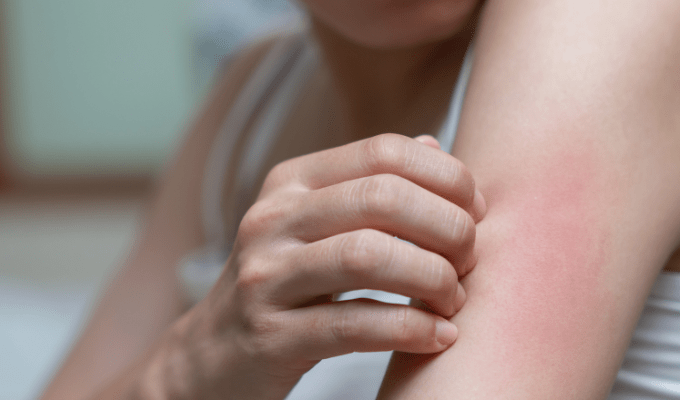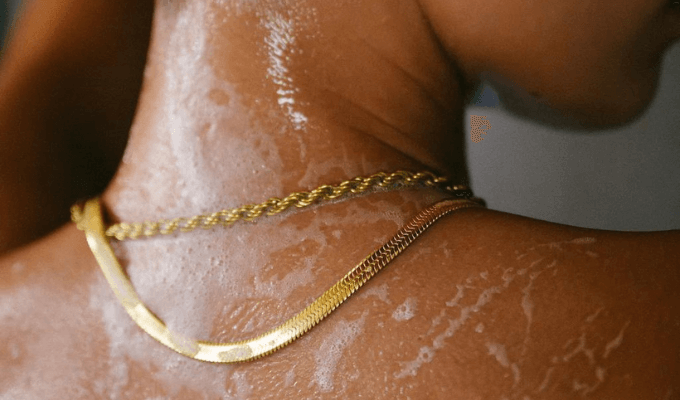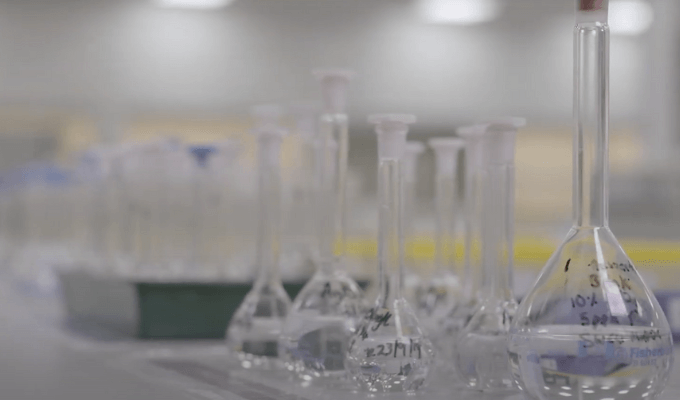Jewellery Testing and precious metals
Are you testing your jewellery and precious metals, to meet the UK and European Legal requirements?
Our in-house UKAS accredited Hypoallergenic
test, testing against Lead, Cadmium and Nickel.
Protect your jewellery against water, sweat, chlorine and saltwater with our in-house method.
Our research tells us that around 80% of tarnishing failures in jewellery, is related to their packaging
Through our XRF method, we can test for plating thickness and plating wear.
FAQ
The AnchorCert Protect methodology identifies the allergenic potential of metal elements present in products and allows only those products deemed to ‘Pass’ to enter the marketplace which considerably reduces the risk of a product causing an allergic reaction to human skin. The ‘Pass’ result from the AnchorCert Protect testing methodology indicates that the component is kind to skin, and it is less likely to cause metal-induced Allergic Contact Dermatitis (ACD) commonly known as skin allergy to an already sensitised individual; thus, preventing both induction and elicitation phase. This means complete freedom from metal allergy.
They are currently being tested under the AnchorCert Protect methodology to identify their potential to cause an allergic response in the product matrix. The product showing an even remote possibility of causing an allergic response to human skin is rejected.
The term ‘Contact Dermatitis’ is used when the skin inflammation is caused by contact with something in its immediate environment. There are two types of Contact Dermatitis – Allergic Contact Dermatitis (ACD) and Irritant Contact Dermatitis (ICD).
Nickel Regulation (section 27 of Annex XVII, REACH)
Lead/Cadmium Regulation (section 63 & section 23 of Annex XVII, REACH)
RoHS Directive (applicable to watches)
General Product Safety Regulation 2005
AnchorCert Protect not only meets the RoHS compliance criteria (excludes Phthalates) applicable to watches their accessories and similar products but also ensures that a product is safe from a skin allergy point of view and from both lead & cadmium poisoning risk by misuse of such articles caused by acute exposure due to ingestion and chronic exposure due to accidental mouthing of articles.
The AnchorCert Protect methodology also has unlimited scope for expansion; the research is ongoing for including various other regulations and products within its scope. The upgrade will be available as and when accreditation is granted, and software updated accordingly.
These are the unique part of AnchorCert Protect methodology. No other currently known method has such a distinction.
Section 1 of the Trade Descriptions Act 1968 prohibits the use of false claims in relation to goods. Section 3 of the same Act extends and defines this prohibition. Thus, a false trade description “is a trade description which is false to a material degree” and “a trade description which, though not false, is misleading… shall be deemed to be a false description”.
Note: Trade Descriptions Act 1968 has now been replaced with Unfair commercial practices directive 2005/29/EC (“The UCPD”)
The Local Authorities Co‐ordinating Body on Trading Standards (LACOTS) are of the view that data should be collected before making any such claims. This advice highlights the risks associated with absolute claims given the variabilities involved in metal release related procedures, and the absence of alternative recognised methodology for comparing findings. Instead, and in the absence of a recognised definition, LACOTS recommends the following approach to make an absolute claim about allergy:
identifies where every effort has been made to reduce allergenic potential.
does not state or imply that all allergy suffers will benefit where this is not the case; and
can be supported by appropriate data.
Keeping the spirit of above recommendation of LACOTS in view we can state that to date we have collated the test data for thousands of items, verified our findings both by customer evidence which includes positive patch testing data from various sources, customer trial by assessing product return data, experimental studies and by applying scientific logic and also in-house laboratory experiments as appropriate and believe that we can substantiate in a court of law the accuracy of the AnchorCert Protect test methodology with regard to meeting the above stated claims.
Epidermis – This is an outer layer of skin, no thicker than a sheet of paper.
Dermis – This thick middle layer makes up most of your skin. Dermis contains blood capillaries, nerve endings, sweat glands, hair follicles, and other structures.
Hypodermis – This layer is situated under the skin, which is mainly fat.
Chemicals/soluble metal ions can be absorbed through millions of sweat glands located all over our bodies, and hair follicles and cross the epidermis into the dermis area of skin to cause an immune reaction.
The AnchorCert Protect methodology identifies the allergenic potential of metal elements present in products and allows only those products deemed to ‘Pass’ to enter the marketplace which considerably reduces the risk of a product causing an allergic reaction to human skin. The ‘Pass’ result from the AnchorCert Protect testing methodology indicates that the component is kind to skin, and it is less likely to cause metal-induced Allergic Contact Dermatitis (ACD) commonly known as skin allergy to an already sensitised individual; thus, preventing both induction and elicitation phase. This means complete freedom from metal allergy.The AnchorCert Protect test methodology measures the release concentration of the potentially known 16 metallic skin sensitisers and provides an accurate measurement of their sensitisation potential based upon their reaction with novel artificial sweat and the formation of soluble metal ions.
‘Pass’ results indicate that the component is kind to skin, and it is less likely to cause metal-induced Allergic Contact Dermatitis (ACD) commonly known as skin allergy to an already sensitised individual; thus, preventing both induction and elicitation phase. This means complete freedom from metal allergy.
A ‘Fail’ result indicates that the component parts may not be suitable for contact with human skin and may cause metal-induced Allergic Contact Dermatitis (ACD).
Jewellery and similar items complying with the AnchorCert Protect threshold release limits can be classed and marketed as AnchorCert Protect Compliant.
The test procedure also ensures that the test sample identified as compliant by AnchorCert Protect methodology shall also be compliant for nickel when tested by EN1811 + A1:2015 method. The success rate has been above 99%.
They are currently being tested under the AnchorCert Protect methodology to identify their potential to cause an allergic response in the product matrix. The product showing an even remote possibility of causing an allergic response to human skin is rejected.
In compliance with the GPSD Directive, the supply chain must ensure that only safe consumer products are sold in the European Union (EU); consumers must be informed of the risks that are not immediately perceptible via the use of a suitable warning, e.g.
CONTAINS COBALT, CAUSES SENSITISATION TO THE SKIN (H 317).
Sections 28, 29 and 30 of Annex XVII of REACH clearly states that the entire supply chain, including consumers, must be notified, (within 45 days, if requested), if CMR (Carcinogenic, Mutagenic and Repro-toxins) substances are present in an article in quantity exceeding: 0.1% by mass of the mixture.
Members of the supply chain must be able to prove to the regulatory body (e.g., TS) responsible for overseeing market discipline:
That they have ordered products or components free of problems.
That they have received products or components free of problems.
That they have made sure that they have verified the absence of the problem, this is possible if exposure is adequately controlled to as low a level as is reasonably practicable.
In the above example, Cobalt as the metal itself is a CMR. When present in jewellery, watches & in similar products, it may form CMR substances such as chlorides or oxides of cobalt due to its migration on contact with body sweat. Such exposure presents the greatest risk to human health if the rate of metal release exceeds the already accepted threshold values set out for those metals in EU/US regulations (safe harbour limit).
The AnchorCert Protect test methodology has been validated in such a way that it’s ‘compliance report’ would ensure that that any metal allergens and their compounds, if present or formed during the end use of the product would cause less risk to human and comply with the requirements of General Product Safety Directive (GPSD) from a ‘Skin-Sensitisation’ point of view.
We can confirm that, to the best of our knowledge, no other laboratory in the world is offering a similar or matching test. However, to verify our claim concerning minimising skin allergy related incidences even in already sensitised individuals, thus preventing both sensitisation and elicitation phase, you may wish to undertake trials yourselves and compare results findings obtained from AnchorCert Analytical via the AnchorCert Protect Test with results of items from other laboratories if you believe they offer a similar test.
The Patch testing is used frequently by dermatologists to identify the cause of allergic reaction to human skin. ESSCA (the European Surveillance System on Contact Allergies) is an EU network; they collect data on patch-tested patients across Europe. A recent analysis by the European Surveillance System on Contact Allergy (ESSCA) network based on 2002–2010 patch test data across Europe, showed a high frequency of skin allergy:
23.4% of the EU population is sensitised to Nickel
9.3% to Cobalt
5.6% to Chromium
Similarly, the North American Contact Dermatitis Group (NACDG) reported positive responses to Nickel in 19.5%, Cobalt in 8.4% and Chromium in 4.1% of the 5,085 patch-tested subjects.
The science of nickel sensitisation is well established and understood, but the science of other metal(s) induced allergic contact dermatitis are not well understood. ANCHORCERT PRO RESEARCH PROJECT UNDERTAKEN BY ANCHORCERT GROUP IS ADDRESSING THIS ISSUE.
We have studied the patch test data from all over the world to identify the metal allergens responsible for triggering metal-induced Allergic Contact Dermatitis. The following elements have been identified to have the potential to cause an allergic reaction to human skin: Ni, Cr, Co, Au, Hg, Be, Pd, Pt, Mn, Al, Cu, Fe, Mo, Sn, Ti, Zn.
They are currently being tested under the AnchorCert Protect methodology to identify their potential to cause an allergic response in the product matrix. The product showing an even remote possibility of causing an allergic response to human skin is rejected.
It is highly unlikely that the product marked as compliant with the AnchorCert Protect test methodology will cause an allergy to human skin. The compliance results from the above methodology not only provide the complete freedom from metal allergy even to those who were already sensitised, but method also ensures that the product meets the requirements of the EU nickel regulation (section 27 of Annex XVII, REACH) and of General Product Safety Regulation 2005 from a skin allergy point of view. The following four legislations are mainly applicable to jewellery articles, including watches.
Nickel Regulation (section 27 of Annex XVII, REACH)
Lead/Cadmium Regulation (section 63 & section 23 of Annex XVII, REACH)
RoHS Directive (applicable to watches)
General Product Safety Regulation 2005
AnchorCert Protect not only meets the RoHS compliance criteria (excludes Phthalates) applicable to watches their accessories and similar products but also ensures that a product is safe from a skin allergy point of view and from both lead & cadmium poisoning risk by misuse of such articles caused by acute exposure due to ingestion and chronic exposure due to accidental mouthing of articles.
The AnchorCert Protect methodology also has unlimited scope for expansion; the research is ongoing for including various other regulations and products within its scope. The upgrade will be available as and when accreditation is granted, and software updated accordingly.
These are the unique part of AnchorCert Protect methodology. No other currently known method has such a distinction.
Section 1 of the Trade Descriptions Act 1968 prohibits the use of false claims in relation to goods. Section 3 of the same Act extends and defines this prohibition. Thus, a false trade description “is a trade description which is false to a material degree” and “a trade description which, though not false, is misleading… shall be deemed to be a false description”.
Note: Trade Descriptions Act 1968 has now been replaced with Unfair commercial practices directive 2005/29/EC (“The UCPD”)
The Local Authorities Co‐ordinating Body on Trading Standards (LACOTS) are of the view that data should be collected before making any such claims. This advice highlights the risks associated with absolute claims given the variabilities involved in metal release related procedures, and the absence of alternative recognised methodology for comparing findings. Instead, and in the absence of a recognised definition, LACOTS recommends the following approach to make an absolute claim about allergy:
identifies where every effort has been made to reduce allergenic potential.
does not state or imply that all allergy suffers will benefit where this is not the case; and
can be supported by appropriate data.
Keeping the spirit of above recommendation of LACOTS in view we can state that to date we have collated the test data for thousands of items, verified our findings both by customer evidence which includes positive patch testing data from various sources, customer trial by assessing product return data, experimental studies and by applying scientific logic and also in-house laboratory experiments as appropriate and believe that we can substantiate in a court of law the accuracy of the AnchorCert Protect test methodology with regard to meeting the above stated claims.
We can help ensure that you conform to REACH regulation. Our UKAS accredited laboratory offers all necessary REACH tests, and our professional staff are experts in this field and closely involved in the latest developments. AnchorCert Group, which is part of the Birmingham Assay Office, is involved in these developments and commits itself to keep our Customers up to date with any changes they need to be aware of.










